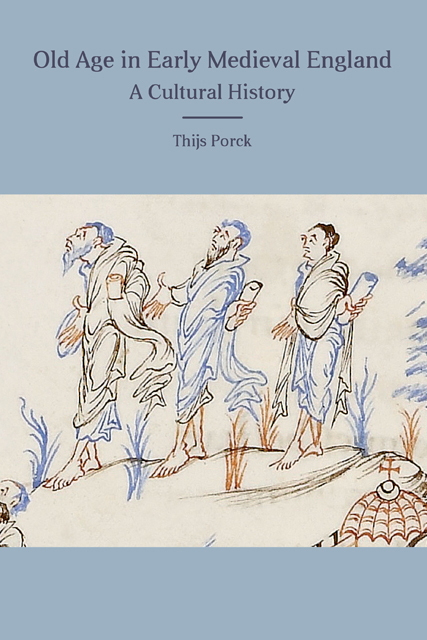Book contents
- Frontmatter
- Contents
- Illustrations
- Acknowledgements
- Abbreviations
- Introduction
- 1 Definitions of Old Age
- 2 Merits of Old Age
- 3 Drawbacks of Old Age
- 4 frode fyrnwitan: Old Saints in Anglo-Saxon Hagiography
- 5 hare hilderincas: Old Warriors in Anglo-Saxon England
- 6 ealde eðelweardas: Beowulf as a Mirror of Elderly Kings
- 7 gamole geomeowlan: Old Women in Anglo-Saxon England
- Conclusion
- Bibliography
- Index
- Anglo-Saxon Studies
5 - hare hilderincas: Old Warriors in Anglo-Saxon England
Published online by Cambridge University Press: 17 January 2023
- Frontmatter
- Contents
- Illustrations
- Acknowledgements
- Abbreviations
- Introduction
- 1 Definitions of Old Age
- 2 Merits of Old Age
- 3 Drawbacks of Old Age
- 4 frode fyrnwitan: Old Saints in Anglo-Saxon Hagiography
- 5 hare hilderincas: Old Warriors in Anglo-Saxon England
- 6 ealde eðelweardas: Beowulf as a Mirror of Elderly Kings
- 7 gamole geomeowlan: Old Women in Anglo-Saxon England
- Conclusion
- Bibliography
- Index
- Anglo-Saxon Studies
Summary
“Of what use is an old man in battle?”, Alfred J. Wyatt asked long ago, as he argued against the standard interpretation of the phrase “unorne ceorl” in line 256 of The Battle of Maldon as ‘an old churl’. Rather than ‘old’, Dunnere, the character referred to, should be seen as being ‘plain, humble’, Wyatt maintained. Oliver Emerson confirmed Wyatt’s translation and added that assigning the meaning ‘old’ to the word unorne is “a sad libel upon the valiant Dunnere”. While their semantic analysis of unorne is now generally accepted, Wyatt and Emerson’s reasoning strikes as odd, given that Dunnere belonged to the same group of warriors as the “eald geneat” [old companion] Byrhtwold, led by the “har hilderinc” [grey-haired warrior] Byrhtnoth. Moreover, their comments seem to reflect a modern prejudice with respect to the aptness of elderly men for military activities.
Judging the past in modern terms is problematic; the Middle Ages in particular was a time when elderly men could make themselves useful on the battlefield. The history of the Crusades, for instance, provides numerous examples of active participants of an advanced age: Raymond of St Gilles (1041/1042–1105), Raynald of Châtillon (1125–1187) and the Holy Roman Emperor Frederick I Barbarossa (1122–1190) all died in the Holy Land, well into their sixties. Perhaps the most impressive elderly warrior of the Middle Ages was Enrico Dandolo (1107–1205), the doge of Venice and leader of the Fourth Crusade (1202–1204). When the Crusade started, Dandolo was over ninety years old and blind. Despite his age and visual impairment, he participated actively in various battles. At the siege of Constantinople in 1203, to give a striking example, Dandolo sensed that his Venetian troops were hesitant to advance on the city walls and he gave orders to bring him ashore. He ran towards the enemy walls, carrying the Venetian banner; “as Dandolo had calculated, the Venetians were shamed by the old man’s bravery; they could not abandon their venerable leader and rushed to join him”. Dandolo’s charismatic leadership paid off: the people of Constantinople were surprised by the attack and suffered defeat.
- Type
- Chapter
- Information
- Old Age in Early Medieval EnglandA Cultural History, pp. 135 - 176Publisher: Boydell & BrewerPrint publication year: 2019

